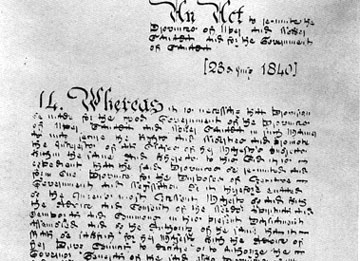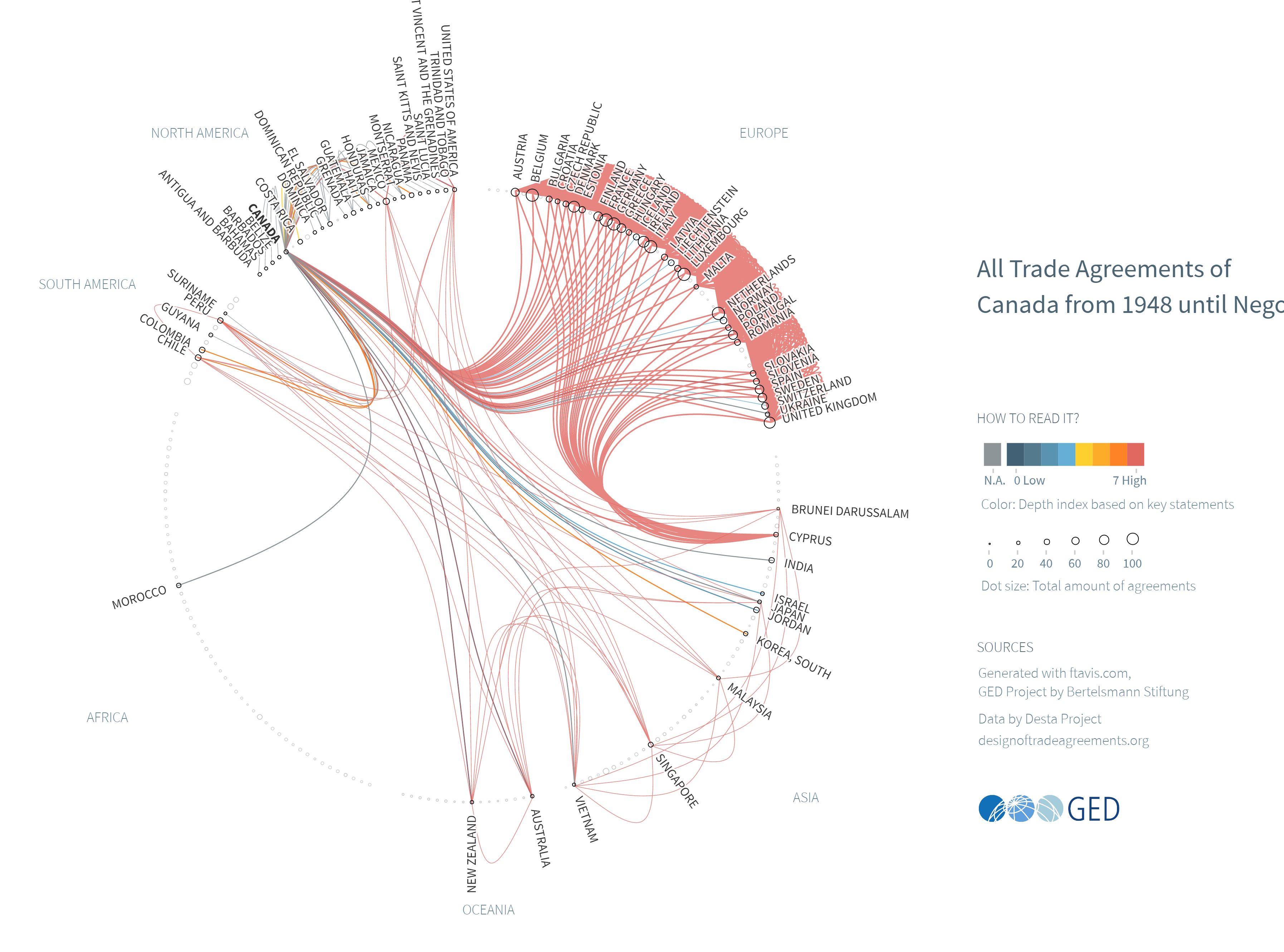Article
Act of Union (Plain-Language Summary)
The Act of Union was passed by the British Parliament in July 1840. It became law on 10 February 1841. It merged Canada West (formerly Upper Canada) and Canada East (formerly Lower Canada) into the Province of Canada (1841–67). The Act was based on the findings of the Durham Report. It was presented by Lord Durham in 1839. The Act sought to assimilate French Canadians, limit the power of the Family Compact and promote economic growth. This article is a plain-language summary of the Act of Union. If you would like to read about this topic in more depth, please see our full-length entry: Act of Union.










